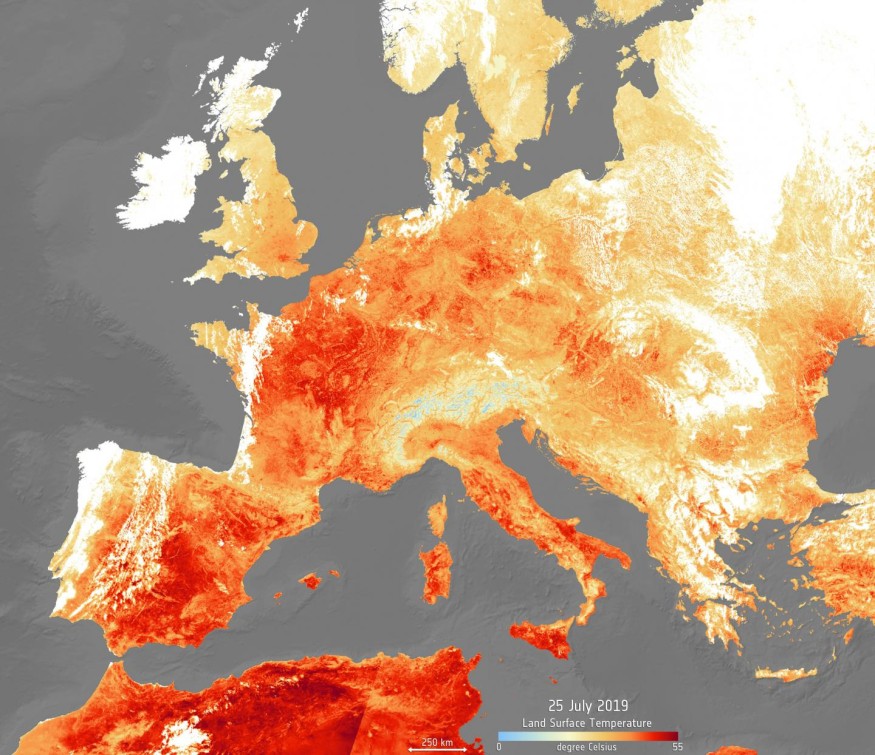At the present rate of warming, residents of South Asia are still subjected to heat waves regularly. However, a recent report that estimates how much heat stress people will face in the future shows that if the temperature increases by 2 degrees Celsius, the population's vulnerability to heat stress will almost triple.

According to a recent study published in Geophysical Research Letters, short-format publications with immediate consequences covering both Earth and space sciences, limiting warming to 1.5 degrees Celsius would certainly minimize the effect by half. Still, deadly heat stress will become widespread across South Asia.
A Grim Situation
The latest research stresses the importance of tackling climate change in South Asia, home to about a quarter of the world's population.
"The outlook seems grim for South Asia, but the worst can be avoided by holding warming to a minimum," said Moetasim Ashfaq, a computational climate scientist at Oak Ridge National Laboratory and the new study's corresponding author. "Adaptation is needed in South Asia now, not in the future. It's no longer an option."
Related Article : The Gulf Stream is Slowly Approaching a 'Tipping Point,' and It May Eventually Vanish
Temperature Spikes

According to the Intergovernmental Panel on Climate Change, the Earth has warmed by 1 degree Celsius since the Industrial Revolution began. If current trends continue, global warming could hit 1.5 degrees Celsius by 2040. South Asian countries will have no time to transition due to this deadline. "As little as a half-degree rise from today will trigger widespread increases in these incidents," Ashfaq said.
Deadly Heatwaves
People in South Asia are particularly susceptible to deadly heat waves due to the region's already hot and humid summers. Many people live in heavily crowded areas where they don't have daily access to air conditioning. About 60% of the population works in agriculture and can't avoid the sun by living indoors.
The researchers used climate models and estimates of potential population development in the new study to predict the number of people in South Asia who will face unhealthy levels of heat stress at 1.5 and 2 degrees Celsius of warming. They calculated the wet-bulb temperature, which is identical to the heat index except that it takes humidity into consideration as well as temperature. The threshold at which labor becomes unhealthy is 32 degrees Celsius (89.6 degrees Fahrenheit). The end of human survivability is 35 degrees Celsius (95 degrees Fahrenheit), as the body may no longer cool itself.
Previous Temperature Rise
Compared to previous years, their study shows that at 2 degrees of warming, the population's exposure to unhealthy labor temperatures will increase by more than twofold. Exposure to lethal temperatures will increase by 2.7 times.
Although limiting warming to 1.5 degrees Celsius would certainly cut the exposure in half, vast swaths of South Asia will still be subjected to intense heat. In India's major crop-producing regions, such as West Bengal and Uttar Pradesh and Pakistan's Punjab and Sindh, an uptick in heat events that generate unhealthy labor conditions is likely. According to the report, coastal regions and urban centers such as Karachi, Kolkata, Mumbai, Hyderabad, and Peshawar are also severely affected.
"South Asia will suffer severe effects in terms of heat stress even though the temperature rises by 1.5 degrees," Ashfaq said. "That is why the present trend of greenhouse gas emissions must be drastically altered."
Further Studies on the Way

The findings vary from those of a related study published in 2017, which estimated that lethal heat waves will occur in South Asia by the end of the twenty-first century. The researchers believe the earlier analysis is too cautious, given the region's history of deadly heatwaves. In 2015, the fifth deadliest heat wave in modern history struck major parts of Pakistan and India, resulting in about 3,500 heat-related deaths.
For more Environmental News, don't forget to follow Nature World News!
© 2026 NatureWorldNews.com All rights reserved. Do not reproduce without permission.





